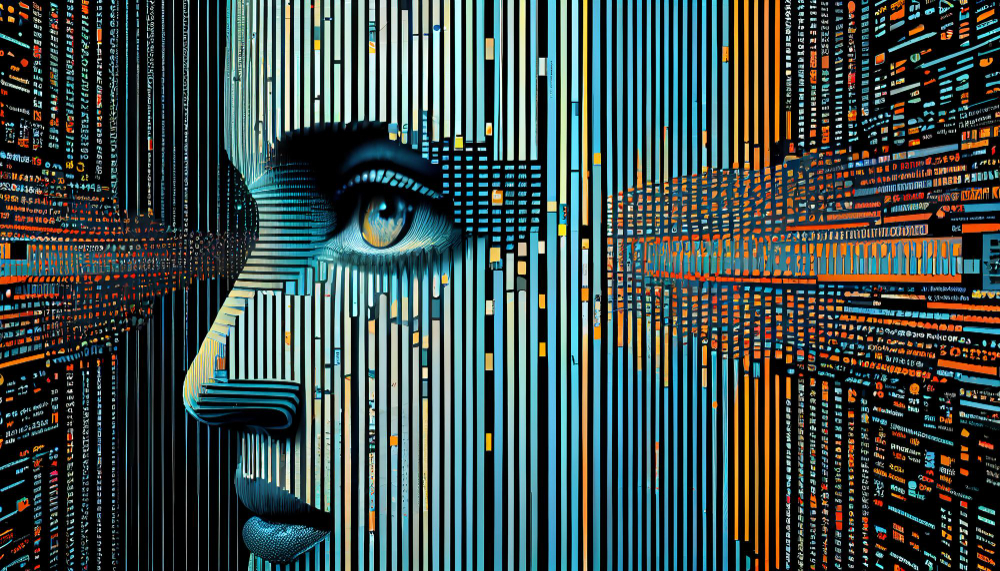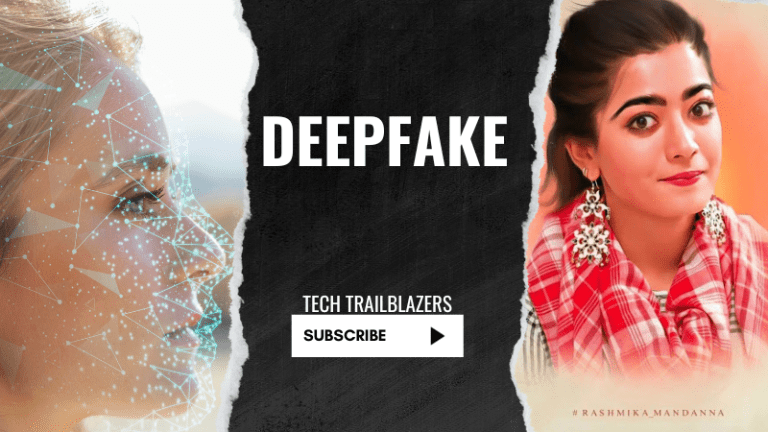Deepfake technology, a powerful facet of AI, carries both promise and peril. Recent events have underscored the latter. A viral video featuring a convincingly manipulated image of actor Rashmika Mandanna, entering an elevator, shook the internet. This deepfake deception gathered over 2.4 million views on social media. The incident raises pressing concerns, with journalist Abhishek Kumar calling for new legal and regulatory measures to combat the proliferation of fake content online.

This isn’t an isolated case; celebrities across fields have fallen prey to similar manipulations. Even actor Amitabh Bachchan acknowledged the issue, emphasizing the need for legal intervention. Deepfake’s downside lies in its potential for misinformation, privacy invasion, and erosion of trust. To harness its benefits, responsible use and vigilant oversight are imperative to safeguard our digital ecosystem.
Let’s have a look, Whats Deepfake Technology?
Deepfake technology, a blend of “deep learning” and “fake,” has garnered significant attention in recent years. This AI-driven technique allows for the creation of hyper-realistic fake videos, audio recordings, and images, often indistinguishable from genuine content. While it has found applications in various fields, including entertainment and marketing, its impact on the real ecosystem is a matter of intense debate among experts. In this blog, we will delve into the benefits and drawbacks of deepfake technology, ultimately contemplating whether it will become a savior or a destroyer of mankind in the future.
Let’s explore the benefits of Deepfake technology
- Entertainment and Creativity:
Digital Resurrection in Films, Deepfake technology has been used to bring deceased actors back to life on the silver screen. For instance, in the Star Wars franchise, the character Princess Leia was portrayed by the late Carrie Fisher. Deepfake technology was employed to recreate her likeness in a way that seamlessly integrated with the film, paying homage to the original character and the actress. Voice Acting, Deepfake technology has also enabled the recreation of iconic voices for animated characters and video game characters. This allows for a deeper connection with the audience and preserves the essence of beloved characters, even if the original voice actors are no longer available. - Training and Education:
Medical Training Medical professionals can benefit from deepfake simulations for surgical procedures. Surgeons and medical students can practice complex surgeries on lifelike virtual patients, enhancing their skills and reducing the risk associated with real-life procedures. Crisis Management Training, Deepfakes can be employed in crisis management exercises for first responders, military personnel, and emergency services. Realistic simulations can prepare individuals for high-stress situations, making them better equipped to handle emergencies effectively. - Personalized Content:
Messages from the Past Deepfake technology has been used to create personalized messages from historical figures, celebrities, or even departed loved ones. For example, a family member can receive a heartfelt video message from a deceased relative on a special occasion, providing a unique and emotional experience. - Accessibility and Inclusivity:
Assisting People with Disabilities, Deepfake technology can help individuals with speech or mobility disabilities. By generating realistic synthesized speech for those who cannot communicate verbally, it improves their ability to interact with the world and enhances their overall quality of life. - Language Translation and Localization: Multilingual Content Creation, Deepfake technology can be employed to dub videos or provide voiceovers in multiple languages, making content accessible to a global audience. This benefits businesses looking to expand internationally and creators aiming to reach diverse audiences.
These use cases illustrate the positive impact of deepfake technology in various fields. When used responsibly and ethically, deepfakes can contribute to the enhancement of entertainment, education, and personal experiences. However, it is crucial to balance these benefits with vigilant measures to counteract potential misuse, such as misinformation and privacy breaches, as mentioned in the previous response.
Let’s delve into the Negative Implications of Deepfake technology

- Misinformation and Fake News: Political Manipulation, Deepfake technology can be used to create convincing videos of politicians saying or doing things they never did. Such manipulated content can be exploited during elections or political campaigns to damage a candidate’s reputation or manipulate public opinion, undermining the democratic process. Media Deception Deepfakes can be used to fabricate news reports, interviews, or speeches, making it challenging to discern real information from fake. This can lead to the spread of false narratives, sowing confusion and distrust in the media landscape.
- Privacy Invasion: Revenge Porn Deepfake technology has been used to superimpose individuals’ faces onto explicit content without their consent, leading to serious privacy violations. Victims may suffer emotional distress, damage to their personal and professional lives, and violation of their rights.Impersonation and Identity Theft, Malicious actors can create deepfake videos or audio recordings to impersonate someone, potentially causing financial or reputational harm. This can extend to identity theft, where fraudsters use deepfakes to gain unauthorized access to personal accounts or sensitive information.
- Erosion of Trust:Suspicion of Authenticity, As deepfake technology improves, individuals may become increasingly skeptical of the authenticity of audio, video, or images. This can lead to a breakdown of trust in relationships, media, and institutions, making it harder to distinguish between genuine and manipulated content.
- National Security Threat:Impersonating Government Officials, Deepfake technology could be exploited by state actors to impersonate government officials in video or audio communications. This can have significant national security implications, leading to diplomatic tensions or even conflicts due to false statements or actions attributed to political leaders.

On the whole, while Deepfake technology has its merits, it also poses significant demerits that revolve around misinformation, privacy breaches, and the erosion of trust. These negative use cases illustrate the potential harm caused by the malicious manipulation of audio, video, and images, with far-reaching consequences for individuals, society, and even international relations. Striking a balance between the benefits and drawbacks of deepfake technology is crucial to ensure its responsible and ethical use. Effective regulation and detection mechanisms are essential in mitigating these challenges and preventing the technology’s misuse.
Jump into The AI Revolution in Parenting: Can Cry Analyzer Apps Replace Motherhood? for more devastating AI Experiences.
Interested to stay updated on mind-blowing Future tech trend, Subscribe to : Beyond Science Fiction: How Your Digital Twin is Reshaping Healthcare

